Patek Philippe
Patek Philippe Ref. 5970 — The Most Beautiful Classic Watch Ever Made
Patek Philippe
Patek Philippe Ref. 5970 — The Most Beautiful Classic Watch Ever Made
But rather to reveal that underneath the Negroni-induced state of nonchalant equanimity lies a seething current of constant anxiety and existential apprehension that is only fully understood by pessimist philosopher Arthur Schopenhauer, particularly nervous sausage dogs, and me. Because we know the unremitting irrefutable truth of it all. It is not if sh*t will happen. It is WHEN. And if you want to survive said aforementioned sh*t, you need to A: Always, B: Be, R: Ready. Zombie apocalypse? Better have brain-stabbing tools at constant reach, sleep with your Danner combat boots on and lay down a Herculean level of base cardiovascular fitness. Cause ain’t no fatties going to outrun the ravenous hordes of the undead.
So I found it amusing that last December at both the panel discussions for my magazine The Rake’s collaboration with Phillips in their New York auction, and for Hodinkee’s 10th Anniversary Weekend, I was asked the same question: “If there were a fire in your house, what is the one watch you would rescue?” OK, let’s put aside that first, I would be morally obligated to rescue my indomitable sausage dog. But if I were able to retrieve just one watch from my home, before it went up in flames like a Viking funeral pyre stoked with napalm, it would be my Patek Philippe 5970.
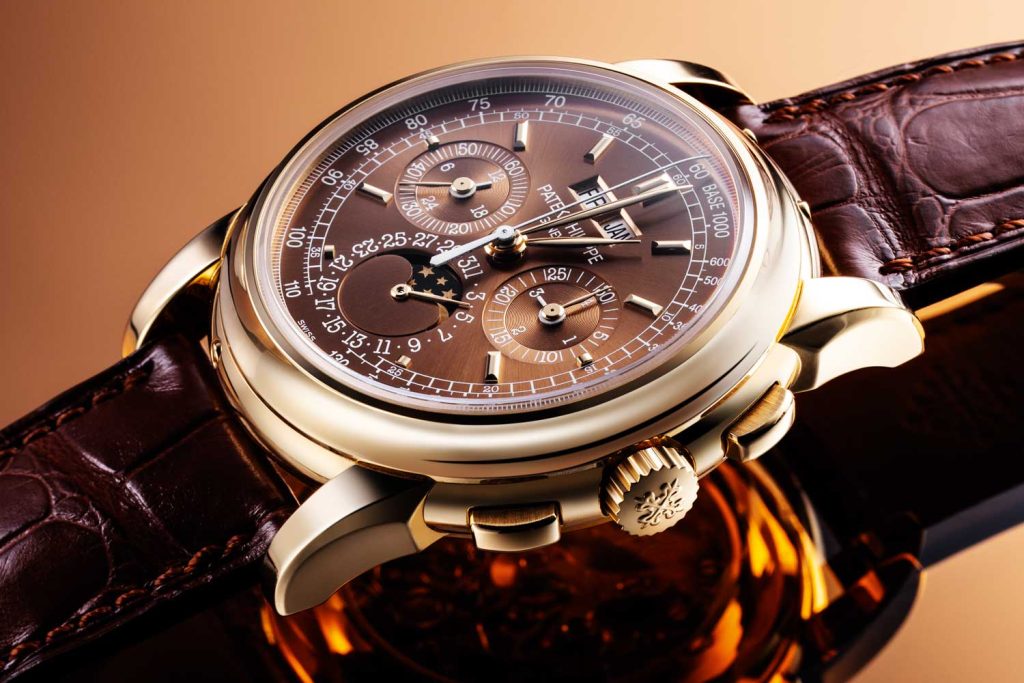
Ref. 5970 in rose gold with a unique chocolate dial, property of Wei Koh (Image © Revolution)
Partaking of Watchmaking Beauty
Why the Patek Philippe 5970 perpetual calendar chronograph? For two reasons: first, that mine is a very special end-of-series execution with a bronze dial and I was profoundly touched to be allocated the last piece. That I was found worthy of this timepiece is to me the ultimate validation of my one and a half decades as a watch journalist. The second thing is that to me, the 5970 — the last of the Lemania 2310-based Patek Philippe perpetual calendar chronographs — is the single most beautiful classic wristwatch ever created. Whoa! What the hell? Hang on. Because I know that has immediately raised the hackle/ire/eyebrows of many a veteran watch collector. And as Mike Tay, Group Managing Director of The Hour Glass points out: “Most aficionados will look at the 2499, in particular the first series watches with its square pushers and tachymeter scale, as the single, most important complicated wristwatch in the last 100 years. More than the 1518 launched in 1941 by the Stern family — the world’s first serially produced perpetual calendar chronograph with 281 examples made — which created the genetic blueprint for this complication.” But Tay feels that, at 35mm, the 1518 is just a touch too small compared to the 37.5mm diameter of the 2499, whose presence on the wrist is further enhanced by its sexy stepped lugs.
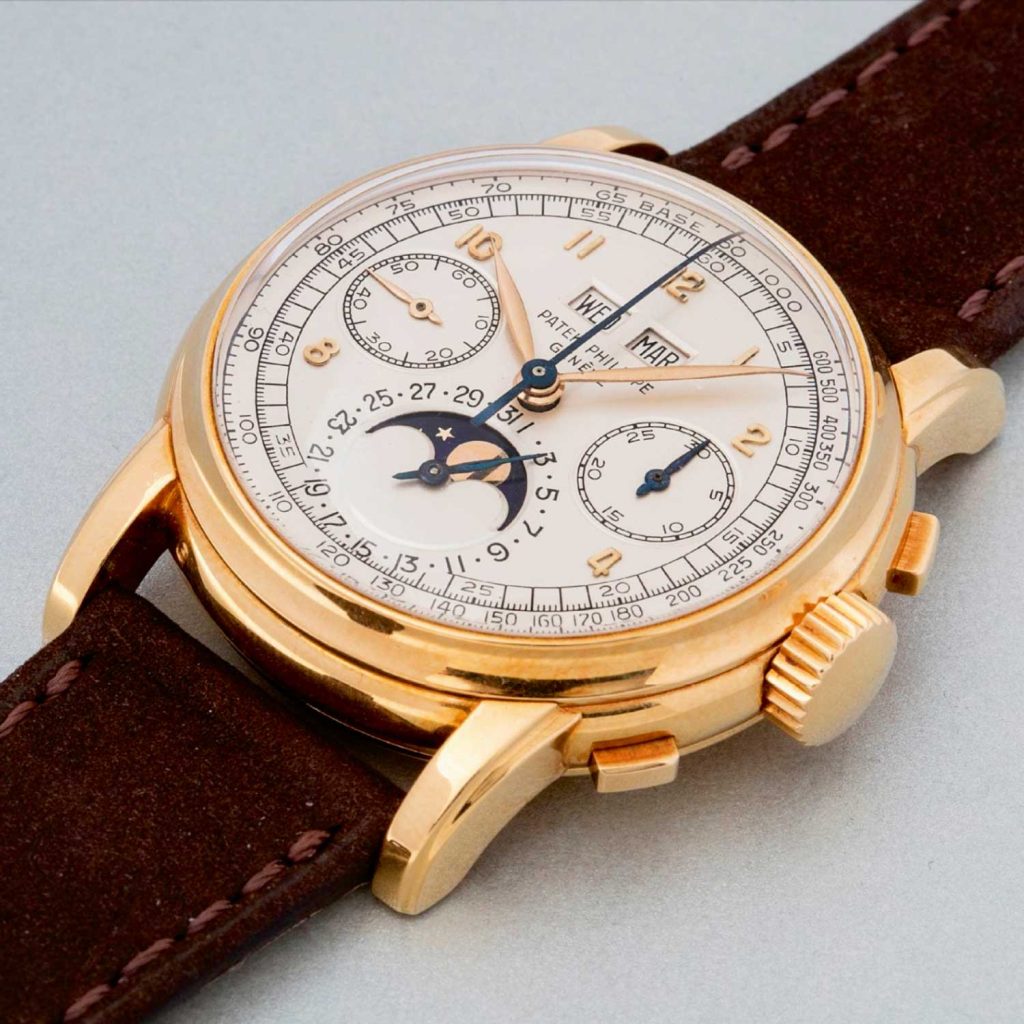
Ref. 2499, Series 1
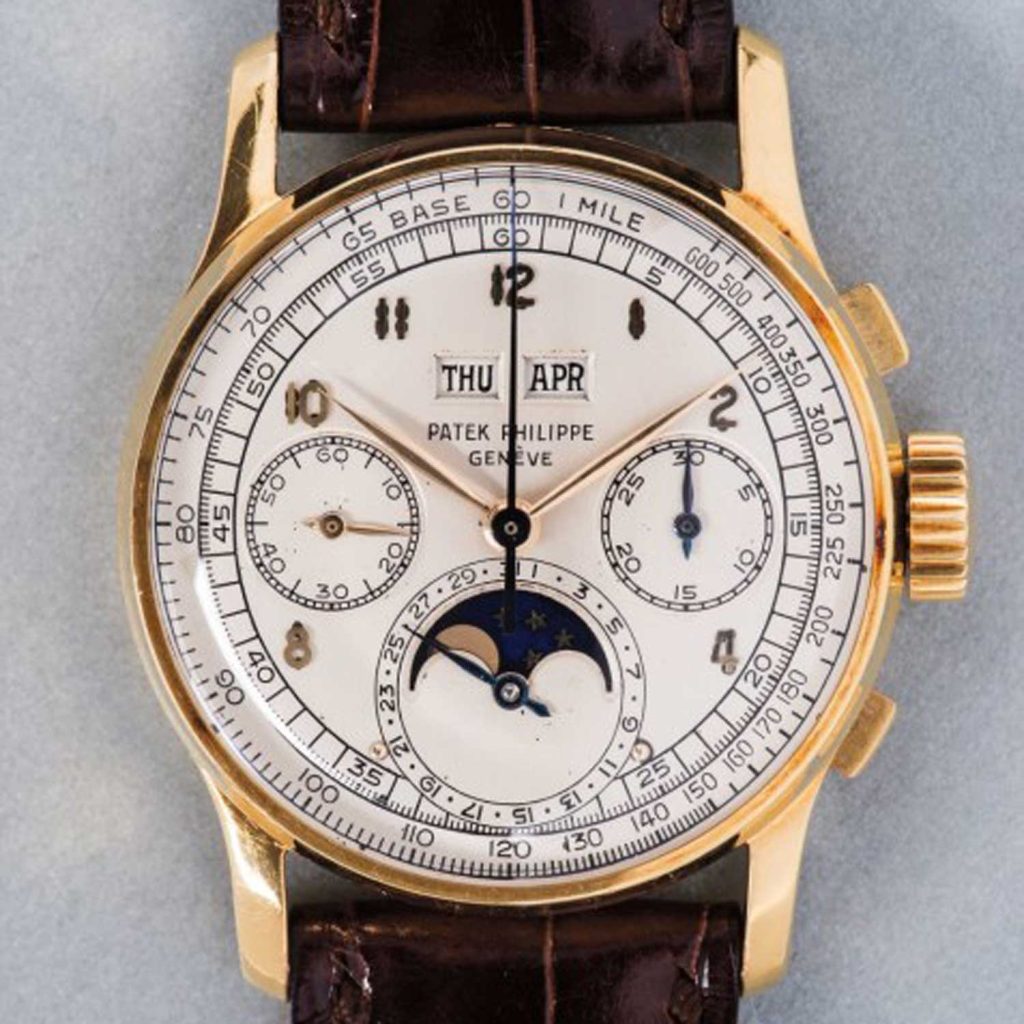
Ref. 1518
Second, and recognising this is a very personal perspective, I feel that the 5970 is the more beautiful watch. That’s right, I said it. Which is not to say that I don’t consider the 2499 — especially the first and second series Arabic index models — beautiful. Of course I do. To me, they eclipse even fellow Swiss export Ursula Andress rising out of the sea in Dr. No in their totemic concupiscent hotness. It’s just that, to me, the 5970 is the most perfect, balanced and wearable watch ever designed. Its lugs are more flared, attenuated and seductive with a dynamically charged Latin tempestuousness that reminds me of the perfect diamond-shaped female calf, while the dial has the most balanced expression of perpetual calendar and chronograph information, and features the most perfect integration of seconds track, tachymeter and date display in an achingly beautiful cynosure of design brilliance — all thanks to a man called Thierry Stern.
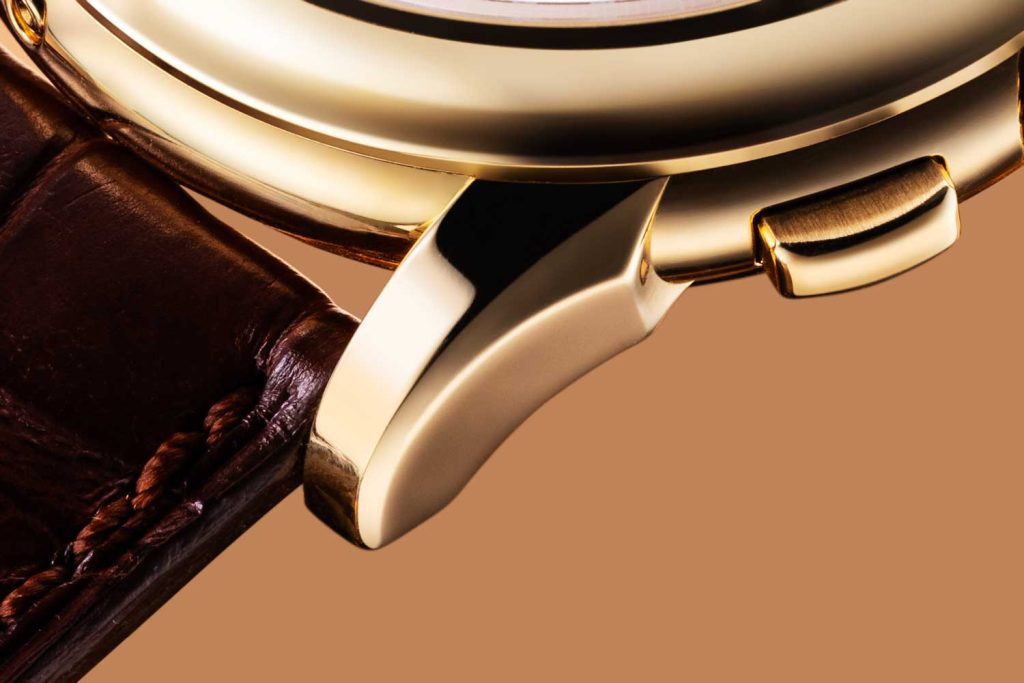
A closeup of the angular lugs and rounded rectangular pushers in the reference 5970 (Image © Revolution)
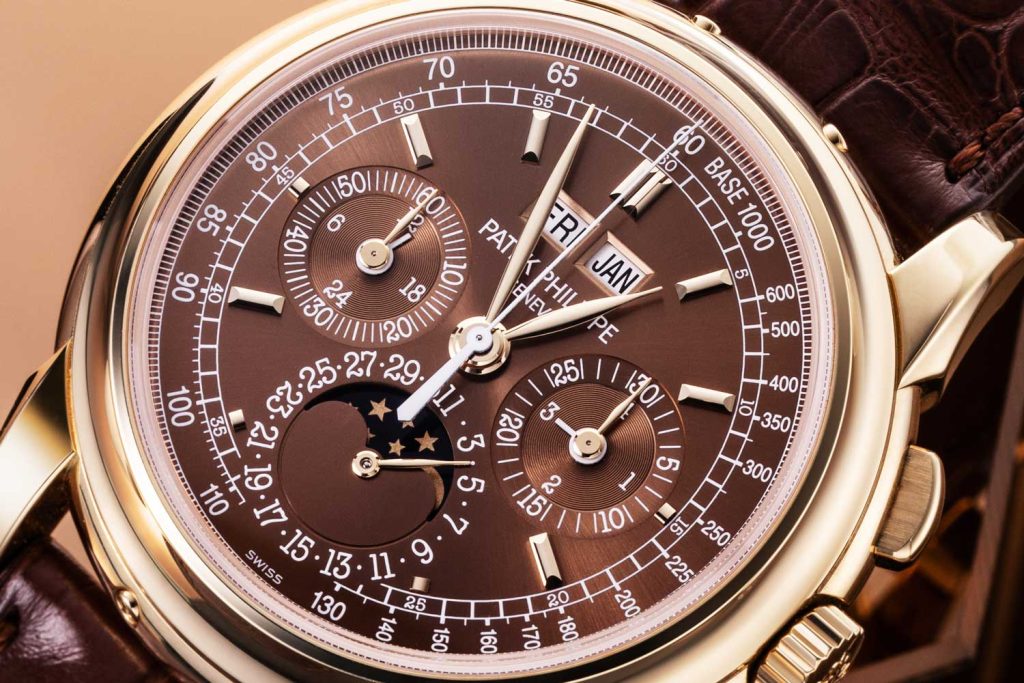
Ref. 5970 in rose gold with a unique chocolate dial, property of Wei Koh (Image © Revolution)
Generational Shifts
What you may not know is that back in 2001, Thierry Stern was given the challenge to design a new perpetual calendar chronograph to replace the venerable 3970, designed by Stern’s father Philippe. OK, let’s place this in context, Philippe Stern is one of the greatest living legends in Swiss watchmaking. He is behind the creation of the integrated manufacture in Plan-les-Ouates, the establishment of the Patek Philippe Museum and the invention of Patek’s patented annual calendar. He’s also the motivating force behind Patek’s push into silicon components. Said Thierry Stern in an interview with Nick Foulkes for Revolution, “Looking back, I can see that it was my test to see if I could become an adult in terms of design at Patek. The only brief my father gave me was: ‘OK, make your own choices.’” After thinking about it long and hard, the younger Stern decided to create a watch that would represent a bridge between his father’s generation and his: “I decided to design a watch that could be worn by my father or myself… For me it is one of the few pieces, perhaps the only piece, which is a mix of two generations of the Stern family.”
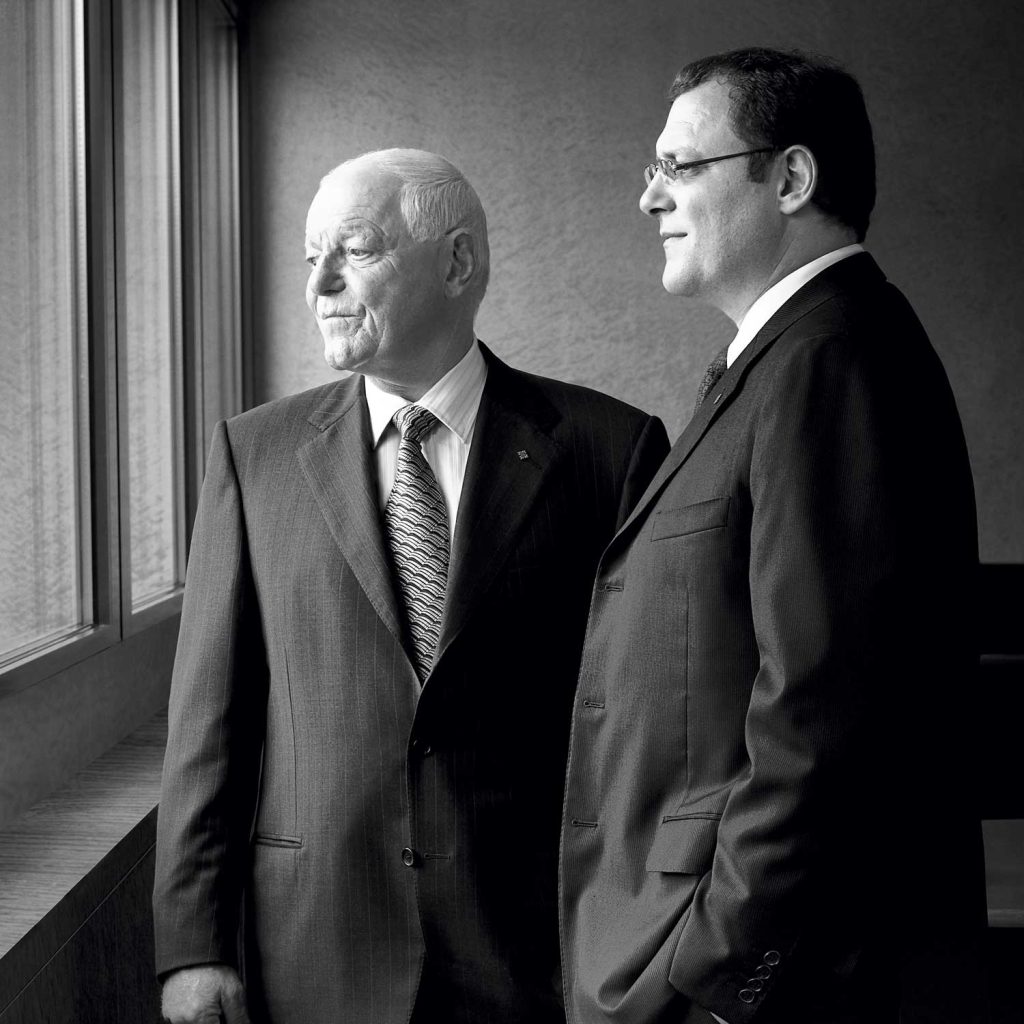
Father and son duo, Philippe and Thierry Stern at the Patek Philippe manufacture
The second and most iconic Patek perpetual calendar chronograph, the 2499, continued to feature the tachymeter in the first two of its four series, and these watches are considered to be the most desirable of the model. The 3970 created by Philippe Stern was actually 1.5mm in diameter smaller than its predecessor, the 2499, most likely because in the context of the ’80s (it was launched in 1986) the idea of miniaturising a complication and diminutive case sizes were in vogue. As such, the 3970 and its split-second chronograph cousin the 5004 never featured a tachymeter. The exceptions to this are the unique execution dials of both watches made for rock legend Eric Clapton. These dials feature an Arabic 12 o’clock index with sensuously applied dot hour markers, and both a full seconds track and a full tachymetric scale.

Ref. 3970 (standard dial, without tachymeter)
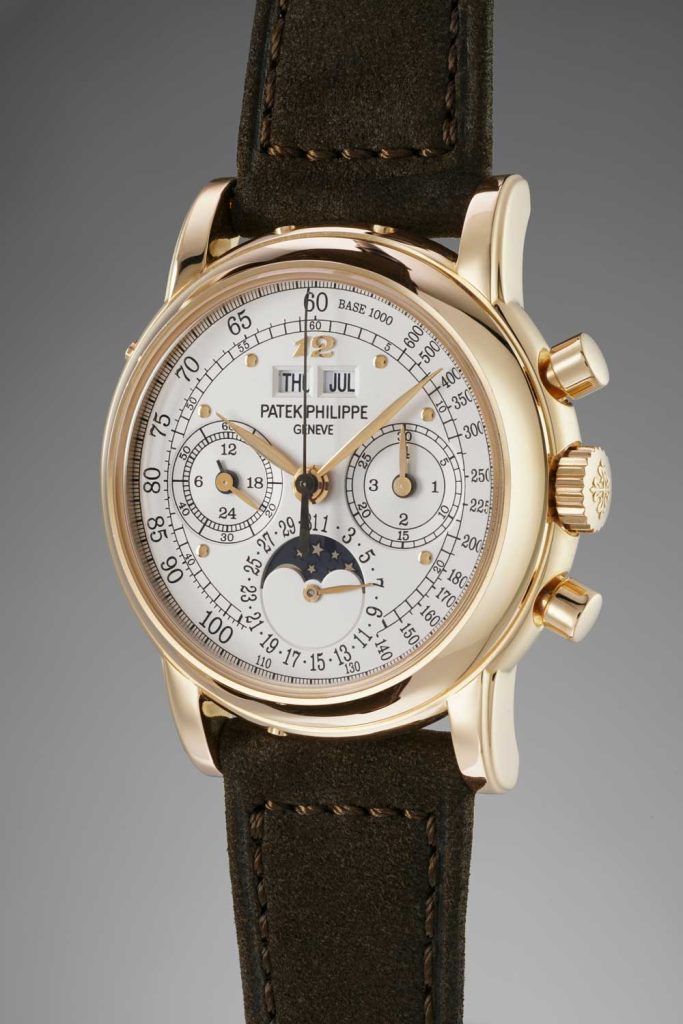
Custom dial ref. 3970 for Eric Clapton
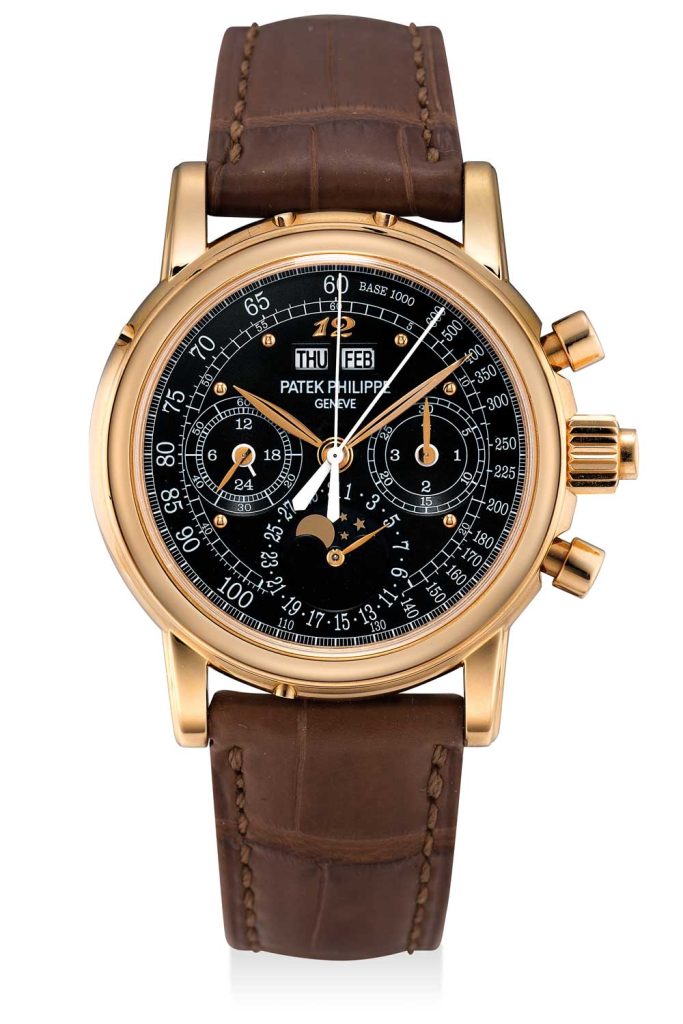
Custom dial ref. 5004 for Eric Clapton
This way of abbreviating the tachymeter was something never done before in either of the 3970’s antecedents. Looking at images of the 1518, you will see a fully articulated ring around the date indications at six o’clock, a fully realised seconds track and the tachymeter placed to the exterior, which makes it harder to read because the font for the speed is so small. The first two series of the 2499 use the same arrangement, though some dials feature an open date display that merges into the second track. With the unique dials of the 3970 and 5004, the inversion of the seconds track and tachymeter means that the tachymeter gains far greater visibility and is much easier to use. It also means that the print for the tachymeter can be far bolder, expressing a more performance-oriented character for the watch. Clearly, the scales used in these dials struck a chord with Thierry Stern, because when it came time to design the 5970, he used this exact design.
Practical Considerations
In designing his watch, Stern began with one critical criterion, which was to make his watch 40mm in diameter to aid visibility. Says Stern, “To me this was the perfect size of a modern classic. It also gave me significantly more space on the dial to focus on improving visibility.” He explains, “My key focus was legibility. For that I needed more space than the 3970 allowed. The indication of the day and month were giving me so much trouble that I came very close to including a magnifier on the glass to enable them to be read easily. But that would have been too radical. Instead, I worked to make it as simple as possible and we tried around 20 different dials.”
Because of the dials’ larger dimensions, it was not necessary to abbreviate the tachymeter as dramatically and in the 5970, its scale disappears only between the 13th and 19th on the date ring. The day and month appear in the same position just below the 12 index, while the leap year indication is integrated into the chronograph minute counter at three o’clock, and the day-and-night/24-hour scale is integrated into the continuous seconds indicator at nine o’clock. And while all this is the same as the 3970, the added 3mm in case size and the bold tachymeter combine to create a far more assertive and sportier wristwatch.
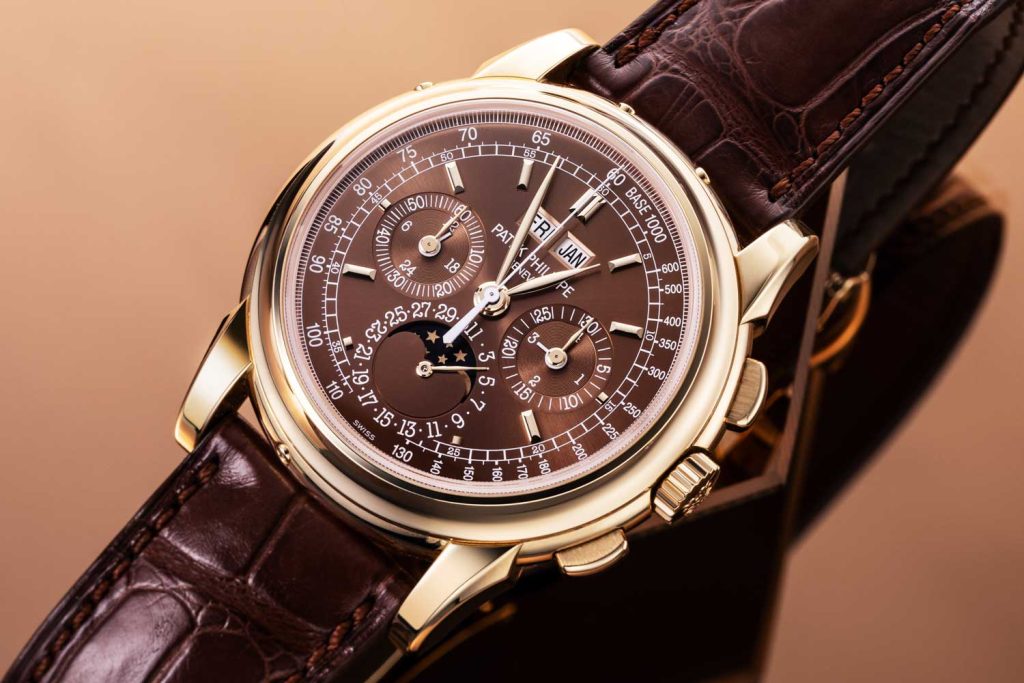
Ref. 5970 in rose gold with a unique chocolate dial, property of Wei Koh (Image © Revolution)
The Best Possible Combination
It should be noted that the hands of the 5970 also harked back to Patek Philippe’s past. The 1518, 2499 and first two series of 3970 watches all featured leaf-shaped hands. However, with the last two series of the 3970, these hands were replaced with the rather more minimalistic baton hands. Considering the sportier and more aggressive nature of the 5970, it seems appropriate that Thierry Stern revived the more stylised and substantial leaf hands. Conversely, the applied hour indexes quote more from the second and third series 2499, most notably with the thicker connected stick markers for the 12 o’clock index. These are separated on the first and second series 3970 and, though connected on the third series 3970, are also noticeably longer and feature pointed tips. All other Patek perpetual calendar chronographs feature Arabic indexes.
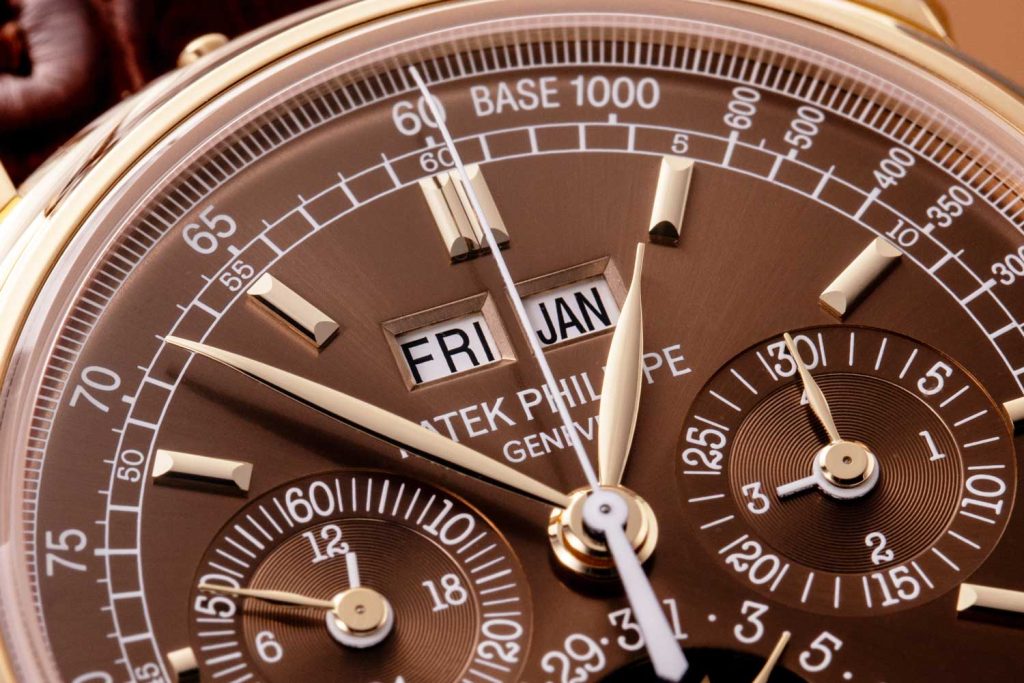
Ref. 5970 leaf-shaped hands (Image © Revolution)
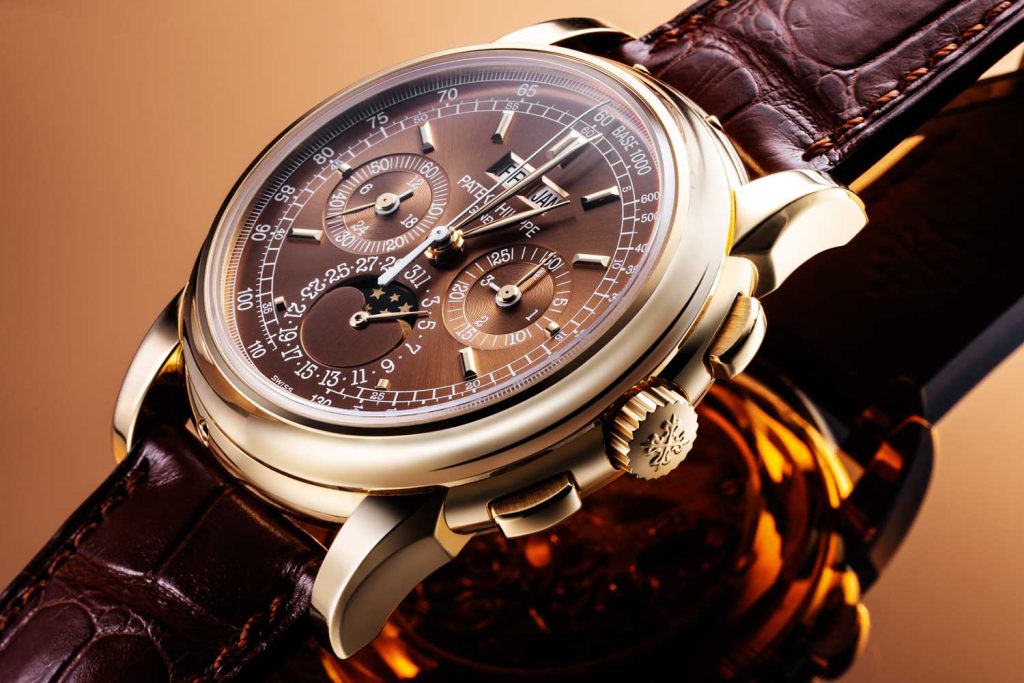
Ref. 5970 in rose gold with a unique chocolate dial, property of Wei Koh (Image © Revolution)
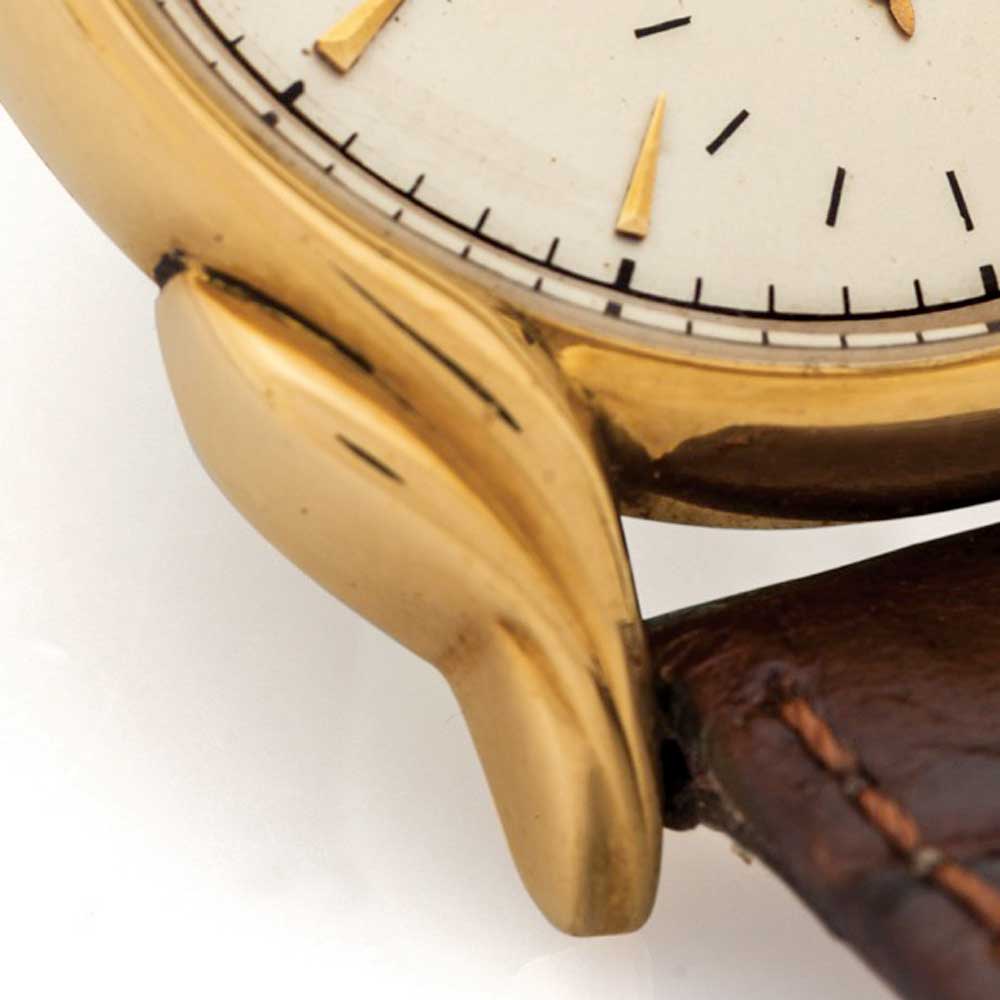
Ref. 2431 “flame” lugs
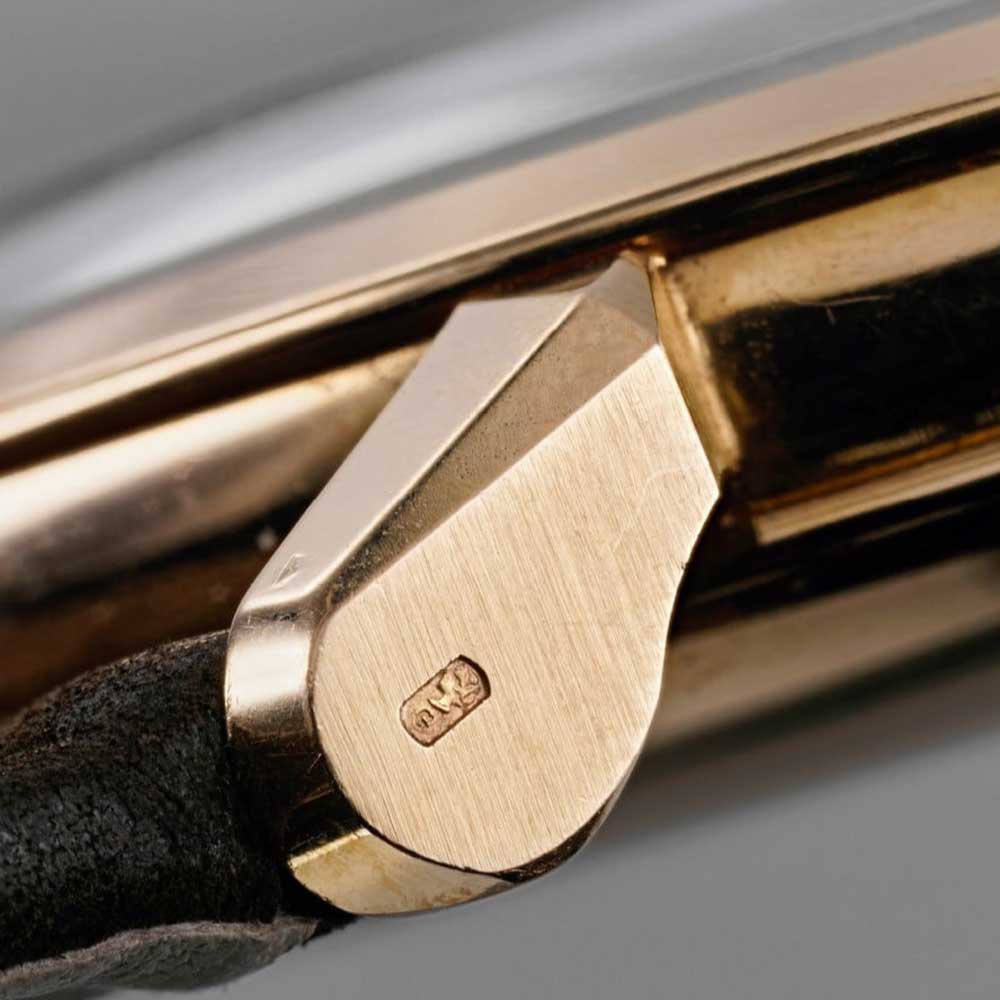
Ref. 1579 “Spider” lugs
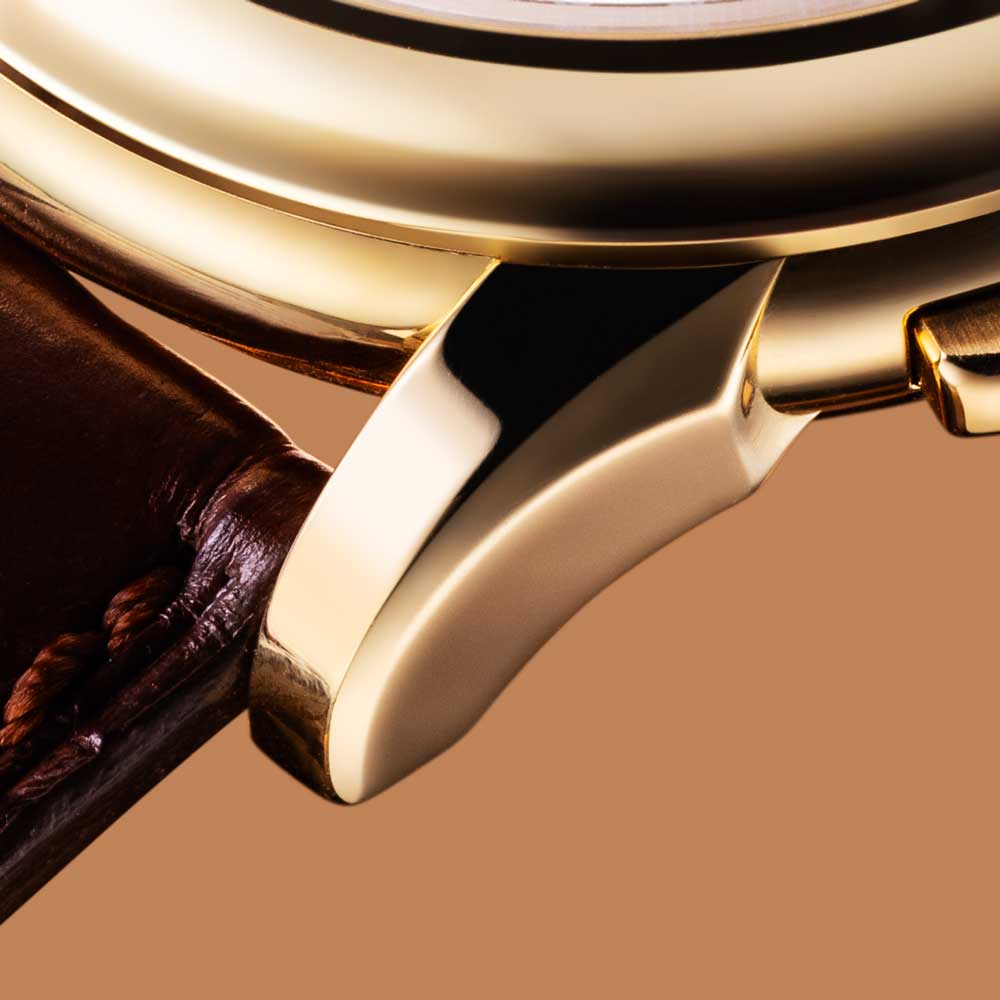
Ref. 5970 lugs
Launched in 2004, the Patek 5970 was an instant hit, creating a waiting list many years in advance. Says Stern with a fond chuckle, “I must have done something right as everyone liked wearing it, and when we decided to stop production, no one wanted to see it leave the collection. We could have continued the 5970 for years, but by that time we had our new in-house calibre.” This statement gives us insight into why the final number of 2,800 watches is far smaller than the potential production run of this extraordinary timepiece, had it not been decreed by Nick Hayek Senior of the Swatch Group that he intended to stop delivering ébauches to competing brands, adding to Patek’s own desire to push into in-house movements. Another reason for my contention that it is one of the best long-term investments in modern watches.
Special Variations
Here’s some further insight into the 5970. The rose- and white-gold watches were made concurrently from 2004 to 2008 and it is believed that 1,000–1,250 examples of each of these exist. The yellow-gold version was made for one year only in 2008, making it the rarest of all metals with an estimated 100–300 created. The 5970 was produced in platinum for two years from 2009–2010 with an estimated 300–500 made. What’s interesting about the platinum watches is they are set apart from the other 5970s with two discreet but clear differences. The first is that each case is set with a diamond at six o’clock. The second is that the marker for 120km appears on the tachymeter scale, whereas in the other versions the word “Swiss” appears. In this case “Swiss” is subtly integrated into the seconds track below. This is the only regular production 5970 where the 120 marker appears.

(From Left) A complete set of reference 5970s sold by Christie’s in white gold, rose gold, yellow gold and platinum
This is to my mind the only instance in which the applied dot indexes are used in combination with a Roman “12” index. As with the platinum watches, the number “120” appears on the tachymeter scale. These 5970s were sold in box sets of four watches comprising a yellow-gold watch with champagne dial, a white-gold watch with blue dial, a red-gold watch with black dial and a platinum watch with salmon dial. The salmon- and black-dial watches are featured in a 2014 article by my fellow watch journalist Su Jia Xian titled “Hands-On with Two Very Special Patek Philippe Ref. 5970”. The blue-dial watch can be seen in Hodinkee’s “Talking Watches” series with Jason Singer. You can see the champagne-dial watch — which is, to me, the most beautiful of the four — in Nick Foulkes’ article for Revolution online, “All You Need to Know about the Patek Philippe Ref. 5970”. It is not clear how many of these box sets were made but I can’t imagine it was very many.
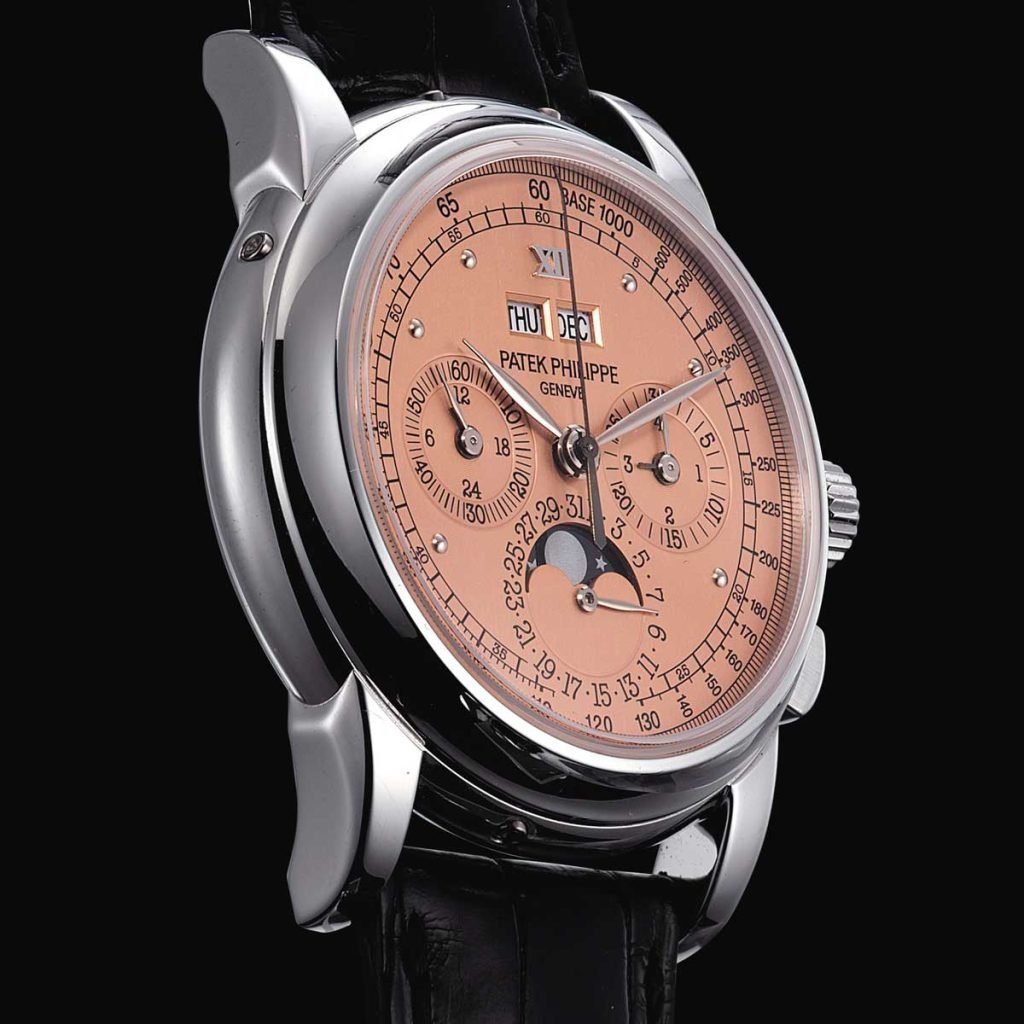
The salmon-dial Patek Philippe ref. 5970 perpetual calendar chronograph, from the set of four, sold in May 2014 by Christie’s for approximately USD 400,000. This example was produced by the brand at the commission of @horology_ancienne in 2011, a year after production of the 5970 had ceased (2004 - 2010). (Image: christies.com)
The yellow-gold version can be seen in Nick Foulkes’ above-mentioned article for Revolution.Watch.
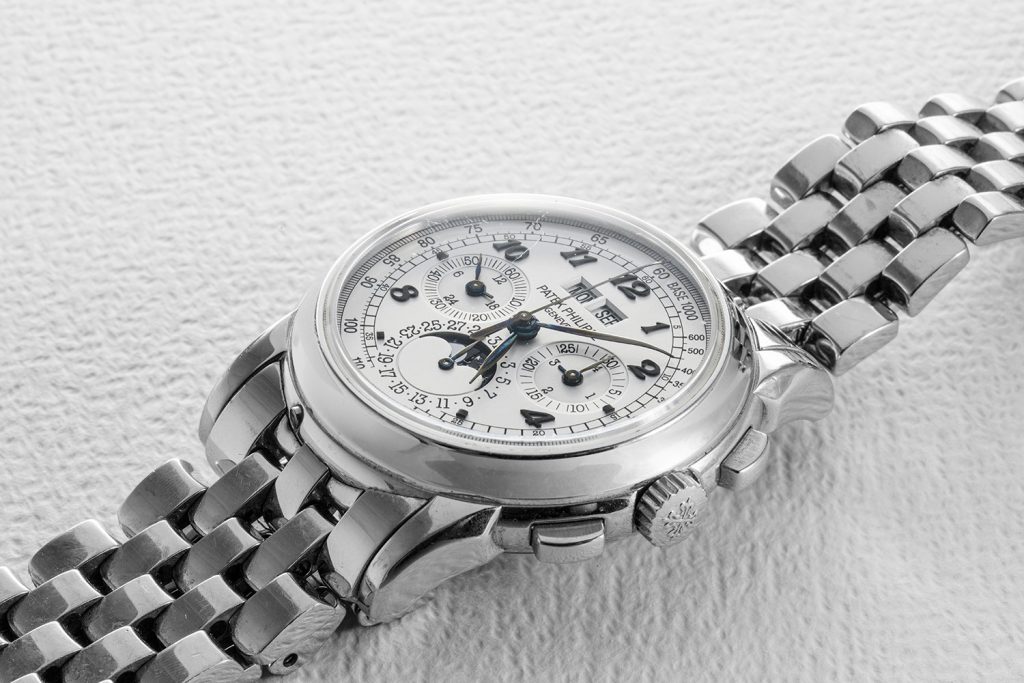
Eric Clapton’s Custom, Breguet-Numeral Patek Philippe Ref. 5970G (Image © Revolution)
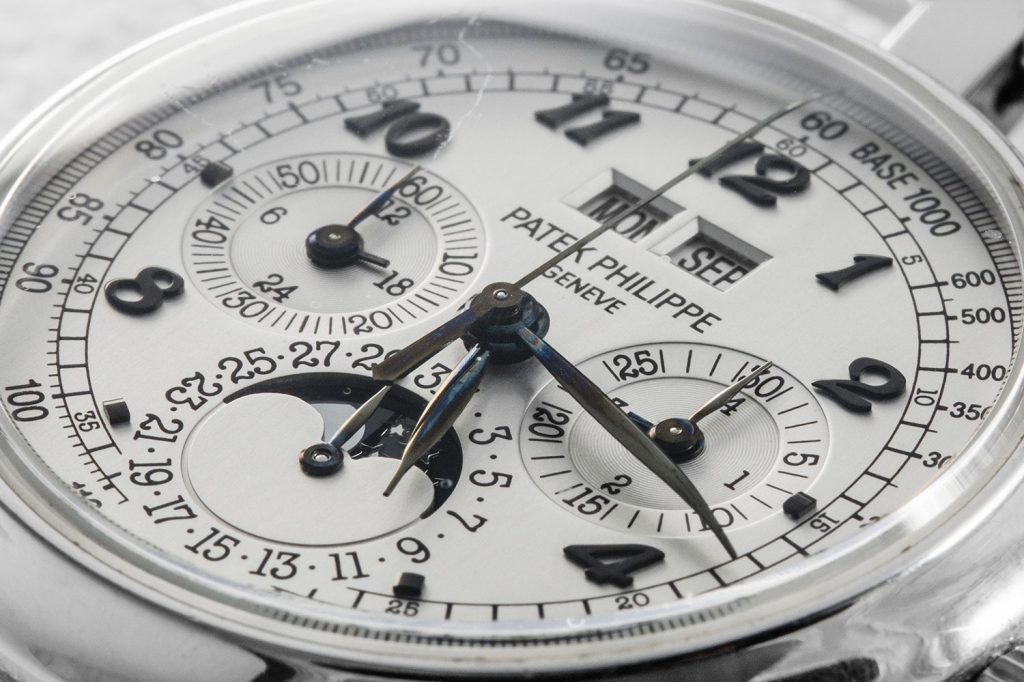
Close up on the dials and those Breguet numerals of Eric Clapton’s Custom, Breguet-Numeral Patek Philippe Ref. 5970G (Image © Revolution)
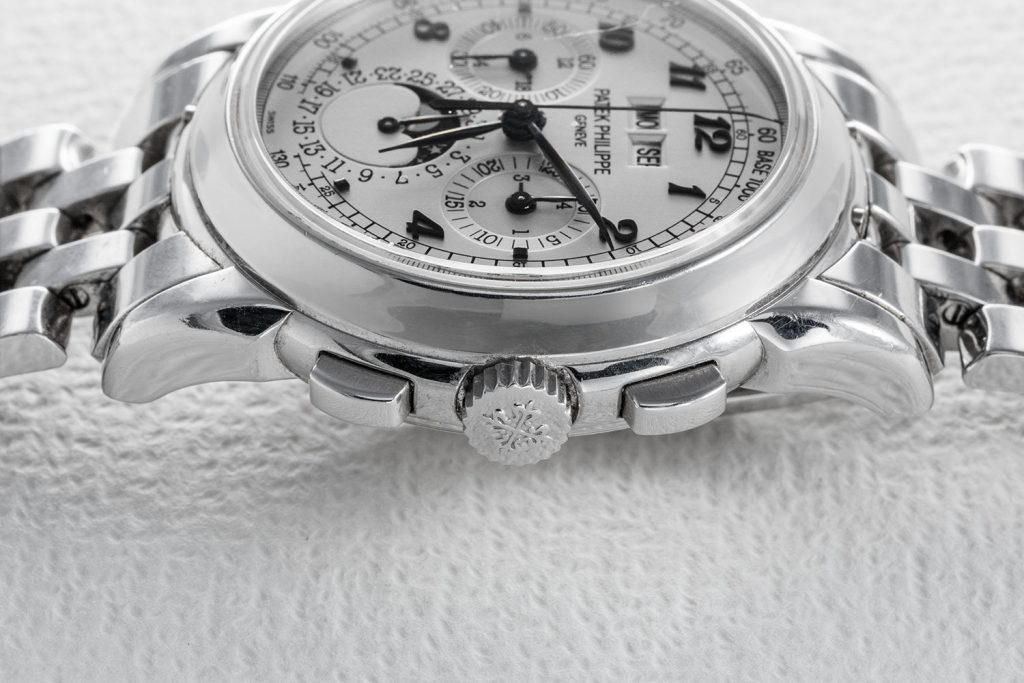
Chronograph pushers on the sides of Eric Clapton’s Custom, Breguet-Numeral Patek Philippe Ref. 5970G (Image © Revolution)
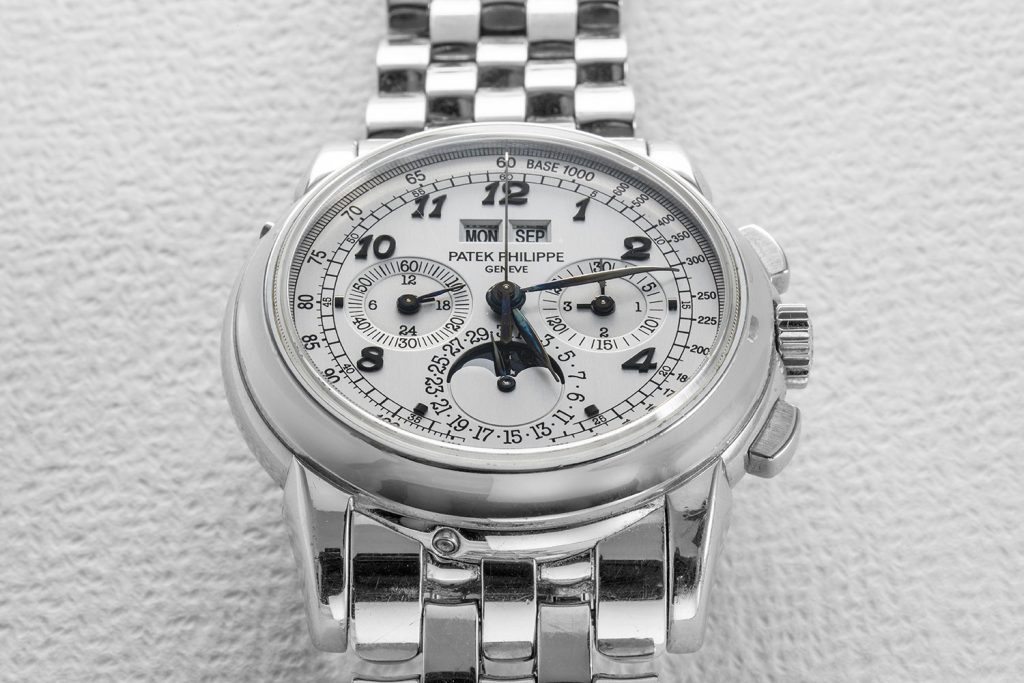
Eric Clapton’s Custom, Breguet-Numeral Patek Philippe Ref. 5970G (©Revolution)
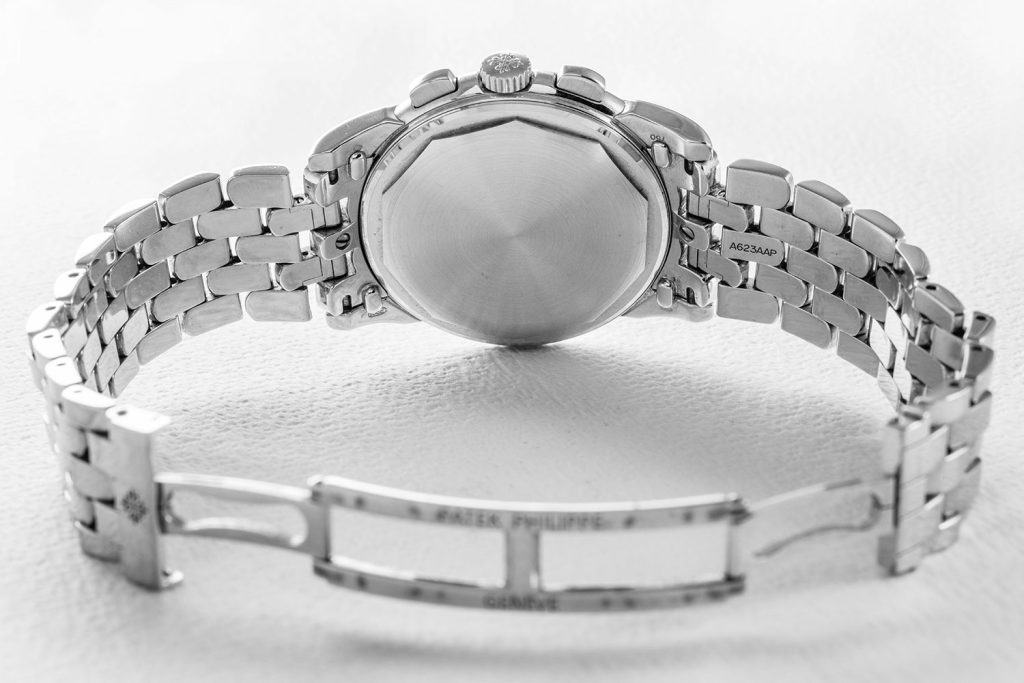
Eric Clapton’s Custom, Breguet-Numeral Patek Philippe Ref. 5970G (Image © Revolution)
Then, of course, there are the bronze-dial 5970 watches. Like the Grand Exhibition salmon-dial model, the layout of the dial is exactly the same as the regular production model, just using a very unique colour. However, the bronze is the only sunray finish dial on a 5970 I know of. At the time of writing this article, I know of three in the world: one with Mike Tay, one with my dear friend and author of Patek Philippe’s authorised biography, Nick Foulkes, and myself. In addition, I’ve been told that John Mayer owns one and that there is at least one more in private hands taking the tally to at least five examples.
From Ubiquitous to Unique
The Lemania 2310, or in Patek-speak CH 27, needs no introduction, it has been the base movement of Patek’s 3970, 5004, 5070 and 5970 and was the same movement that powered every Omega Speedmaster that went to space. In Patek’s hands, the movement is transformed into a masterpiece of beauty with the following improvements over the standard calibre: a free sprung Gyromax balance wheel, a completely redesigned chronograph lever and spring, a fully supported chronograph drive wheel, an escape wheel end-stone, a Geneva-style stud holder for the hairspring, and a cap for the column wheel. The level of finish for the movement is breathtaking, enabling it to be awarded the prestigious Geneva Seal.
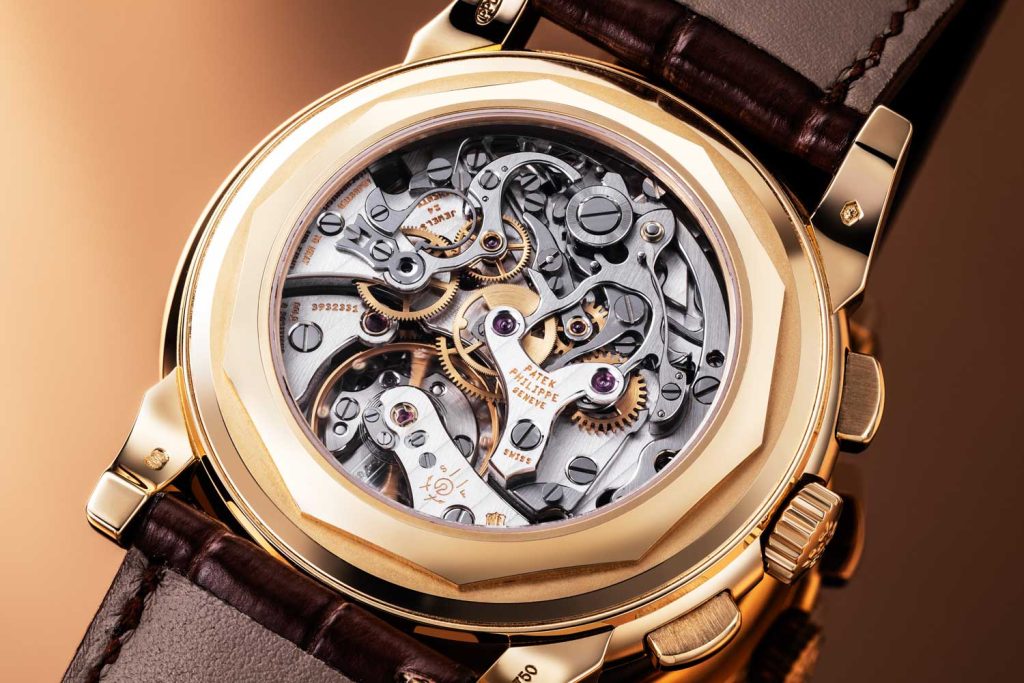
CH 27 (Image © Revolution)
Interestingly, although Patek created its own seal in 2013, the end-of-series watches from 2015 and my bronze-dial watch all feature Geneva Seal movements, leading me to believe that these were movements before Patek’s transition to its eponymous seal.
Ed’s Note: Patek Philippe will be holding a Grand Exhibition in the third quarter of this year that will cross the globe. While no information is currently available at time of print on the exhibition, it will be arriving in Singapore, so keep your eyes peeled for more official announcements from Patek Philippe.










